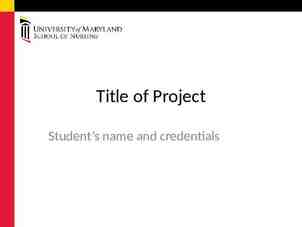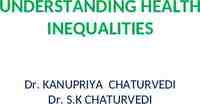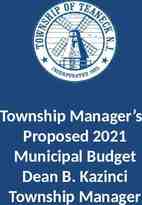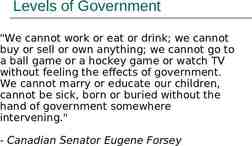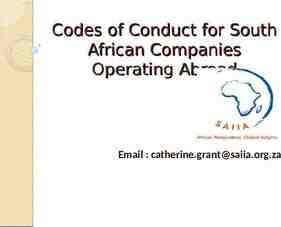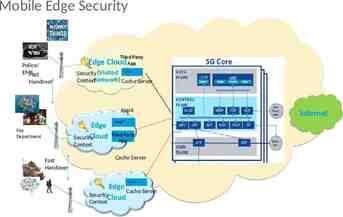The Heart of the Matter: Elementary and Secondary Vertical
56 Slides3.09 MB

The Heart of the Matter: Elementary and Secondary Vertical and Horizontal Teams CURRICULUM. DATA. COLLABORATION.

Why are you here As a member of a curriculum team, you are crucial to the success of every student and teacher in BISD. You will be equipped to do the most important work of curriculum development – work that impacts the entire system. Curriculum documents will be most effective when the end-user is kept in mind. Your input it invaluable. You are crucial to this process. CURRICULUM. DATA. COLLABORATION.

Who are we and what is this work hor·i·zon·tal /ˌhôrəˈzäntl/ Adjective Parallel to the plane of the horizon; at right angles to the vertical. ver·ti·cal /ˈvərtikəl/ Adjective At right angles to a horizontal plane; in a direction, or having an alignment, such that the top is directly above the bottom. What is a horizontal team? What is a vertical team? How might the classic definitions of horizontal and vertical tie in to the work of curriculum teams? What are characteristics of the people who make strong members of such teams? CURRICULUM. DATA. COLLABORATION.

Who are we and what is this work hor·i·zon·tal /ˌhôrəˈzäntl/ Adjective Parallel to the plane of the horizon; at right angles to the vertical. ver·ti·cal /ˈvərtikəl/ Adjective At right angles to a horizontal plane; in a direction, or having an alignment, such that the top is directly above the bottom. What is a horizontal team? What is a vertical team? How might the classic definitions of horizontal and vertical tie in to the work of curriculum teams? Discuss What are characteristics of the people who make strong members of such teams? CURRICULUM. DATA. COLLABORATION.

Central Questions 1. What comprises curriculum design and delivery? 2. How does a district position itself to have a coherent curriculum that is vertically and horizontally aligned? 3. What comprises the work of vertical and horizontal teams? CURRICULUM. DATA. COLLABORATION.

Session Objectives 1. Understand and apply standards-based curriculum theory to the design and delivery issues of alignment. 2. Know and understand key terms and the design characteristics of a curriculum (i.e. quality) that provides adequate direction to teachers. 3. Discuss and be able to disseminate the importance of curriculum design and delivery work and how districts, through vertical and horizontal teams, incorporate quality control. CURRICULUM. DATA. COLLABORATION.

Objective 1 Understand and apply standards-based curriculum theory to the design and delivery issues of alignment. CURRICULUM. DATA. COLLABORATION.

Standards Movement “Americans expect strict standards to govern construction of buildings, bridges, highways, and tunnels; shoddy work would put lives at risk. They expect stringent standards to protect their drinking water, the food they eat, and the air they breathe Standards are created because they improve the activity of life.” Diane Ravitch CURRICULUM.DATACOLLABORATION

Standards Movement President Bush and the nation’s governors, including then-governor Bill Clinton, agreed on six broad goals for education to be reached by the year 2000. Two of these goals were related specifically to academic achievement: Goal 3: Ensure all students will leave grades four, eight, and twelve demonstrating competency in challenging subject matter Goal 4: U.S. students will be first in the world in science and mathematics achievement. CURRICULUM. DATA. COLLABORATION.

Standards-Based Recommendations are based on: Content Expectations Time Teaching CURRICULUM. DATA. COLLABORATION.

Standards-Based Essential Elements Texas Essential Knowledge and Skills College Readiness Standards National Standards Common Core CURRICULUM.DATA.COLLABORATION

Standards-Based TABS TEAMS TAAS TAKS PISA, PSAT, SAT, EX, ACT, AP, IB CURRICULUM. DATA. COLLABORATION.

Standards-Based CURRICULUM.DATA.COLLABORATION

Standards-Based Curriculum National Content Standards State Content Standards District Expectations for Curriculum, Assessment and Instruction CURRICULUM. DATA. COLLABORATION.

Standards-Based: AHA! One educator's AHA moment CURRICULUM. DATA. COLLABORATION.

Discussion Based upon Cindy’s perspective and recent experience, how can the work that you are doing as a curriculum writer influence the thinking of classroom teachers as they plan for learning? CURRICULUM. DATA. COLLABORATION.

Objective 2 Know and understand key terms and the design characteristics of a curriculum (i.e. quality) that provides adequate direction to teachers. CURRICULUM. DATA. COLLABORATION.

Activity for Key Curriculum Terms Find the graphic organizer in your packet. As we discuss the basic concepts and terms associated with curriculum design and development, capture key points about each term using the left side of the organizer. At the end of this portion of our discussion, you will be given time to write the definition in your own words. CURRICULUM. DATA. COLLABORATION.

Key Concepts Curriculum Content Standard Context Cognitive Requirement Curriculum Management Alignment Coordination Articulation Frontloading Backloading CURRICULUM. DATA. COLLABORATION.

Curriculum Any document or plan that exists in a school that defines the work of teachers, at least to the extent of identifying the content to be taught children and the methods to be used in the process. Its purpose is to focus and connect the work of classroom teachers in schools. CURRICULUM. DATA. COLLABORATION.

Content Standard The skill, knowledge, concept, or process learnings of the written curriculum standard and the learnings assessed by the test which should be similar (identical); these should be taught at least 6 months before the test (sequencing), as recommended by Fenwick English. Discuss design CURRICULUM. DATA. COLLABORATION.

Context Three Cs of a Standard Cognitive Requirement What is the cognitive requirement of the standard? What is the VERB? At what level of complexity should students be working? What content is addressed in the standard? What is it about the content that the students will (insert verb here)? What is the context of the content and its relationship to the cognitive requirement? How will students interact with the content of the standard? CONNECT. LEAD. INFLUENCE.

Cognitive Requirement of the Standard The cognitive requirements of the written curriculum standard are parallel/similar to the actual test item(s). The verb within the standard provides evidence of the cognitive requirement, according to Margaret Kilgo. The cognitive requirement is based upon Webster’s definition, not Blooms Taxonomy. CURRICULUM. DATA. COLLABORATION.

Example of Standard Clarification Document Standard: Science 8.11A Readiness Standard describe producer/consumer, predator/prey, and parasite/host relationships as they occur in food webs within marine, freshwater, and terrestrial ecosystems.[8.11A] Cognitive Rigor: What should students be doing? Describing Describe: to give an account of in words; to tell in words what something or someone is like Content: What will the students describe? Relationships in food webs Context: In what context will students describe relationships in food webs? They will describe the following relationships in food webs within marine, freshwater and terrestrial ecosystems. 1) producer/consumer 2) predator/prey 3) parasite/host CURRICULUM. DATA. COLLABORATION.

Context Three Cs of the Standard Cognitive Requirement Describe: to give an account of in words; to tell in words what something or someone is like Relationships in food webs Describe the following relationships in food webs within marine, freshwater and terrestrial ecosystems. 1) producer/consumer 2) predator/prey 3) parasite/host CURRICULUM. DATA. COLLABORATION.

Aligned Assessment: Example of Standard Clarification Document Sample Assessment Item: What is the relationship between squid and phytoplankton in this food web? A The phytoplankton is a host and the squid is a parasite. B The phytoplankton is detritus and the squid is a producer. C The phytoplankton is a producer and the squid is a consumer. D The phytoplankton is a consumer and the squid is a predator. CURRICULUM. DATA. COLLABORATION.

Curriculum Management All of the processes that a district implements to minimize the impact of random variation occurring within the design and delivery of curriculum. If curriculum defines the work that teachers do, curriculum management includes the processes in place to ensure that teachers: a) have clarity and specificity regarding what students need to know and do b) how to teach the curriculum based on best practices c) if students are indeed mastering the curriculum. CURRICULUM. DATA. COLLABORATION.

Curriculum Alignment The match or “fit” between the designed (written), delivered (taught), and assessed (tested) curriculum. Sometimes alignment is referred to as “curriculum CURRICULUM. DATA. COLLABORATION. overlap.”

Curriculum Coordination The focus and connectivity of the curriculum laterally (often referred to as horizontally) at any designated point, as in the case of a grade level or series of grades in the primary unit. CURRICULUM. DATA. COLLABORATION.

Curriculum Articulation The focus and connectivity of the curriculum vertically within a school or school system. This can be discipline specific or interdisciplinary in nature, and is most important for test scores at the secondary school CURRICULUM. DATA. COLLABORATION.

Frontloading & Backloading Curriculum Design Frontloading begins with developing a curriculum and then selecting the appropriate measuring tool to assess it. The curriculum comes first. Backloading begins with an examination of assessment items and data results to develop the curriculum. The test comes first. CURRICULUM. DATA. COLLABORATION.

Frontloading for Backward Design Frontloaded Curriculum Development Unit of Instruction As curriculum developers, we must frontload from the standards and provide specificity through the clarification documents Backward Design of Instruction so that teachers can employ backward design principles when planning instruction. CURRICULUM. DATA. COLLABORATION.

Activity for Key Curriculum Terms During the presentation, you were asked to capture key points about the major concepts and terms associated with curriculum design and development, using the left side of the organizer. Before proceeding, you will be given time to write the definition in your own words, using the right side of the organizer. CONNECT. LEAD. INFLUENCE.

Audit Standards Audit Standard 2 The school system has established clear and valid objectives for students. Curriculum Documents for All Courses (Birdville has 359 curriculum courses) Evidence that documents control random variation within the system (meet the minimum of 12 out of 15 criteria) CURRICULUM. DATA. COLLABORATION.

Design Characteristics Criteria One Description Clarity and Specificity of Objectives 0. No goals/objectives present 1. Vague delineation of goals/learner outcomes 2. States tasks to be performed or skills/concepts to be learned 3. States for each objective the what, when (sequence within course/grade), how actual standard is performed, and amount of time to be spent learning Two Congruity of the Curriculum to the Assessment Process 0. No assessment approach 1. Some approach of assessment stated 2. States skill, knowledge, concepts that will be assessed 3. Keys each objective to district and/or state performance assessments Three Delineation of the Prerequisite Essential Skills, Knowledge, and Attitudes 0. No mention of required skills 1. States prior general experience needed 2. States prior general experience needed in specified grade level 3. States specific documented prerequisite or description of discrete skills/concepts required prior to this learning (may be a scope and sequence across grade/courses if Pre-K-12) Four Delineation of the Major Instructional Resources 0. No mention of textbook or instructional tools/resources 1. Names the basic test/instructional resource(s) 2. Names the basic test/instructional resource(s) and supplementary materials to be used 3. States for each objective the “match” between the basic text/instructional resource(s) and curriculum objective Five Clear Approaches for Classroom Use 0. No approaches cited for classroom use 1. Overall, vague statement on approaching the subject 2. Provides general suggestions on approaches 3. Provides specific examples on how to approach key concepts/skills in the classroom Resource: Curriculum Management Audit, Fenwick English CURRICULUM. DATA. COLLABORATION.

Design Characteristics Criteria Description One Clarity and Specificity of Standards 3 States for each standard the what, when (sequence within course/grade), how actual standard is performed, and amount of time to be spent learning Two Congruity of the Curriculum to the Assessment Process 3 Keys each standard to district and/or state performance assessments Three Four As you view the design characteristics of aEssential quality what are your Delineation of the Prerequisite Skills,curriculum, Knowledge, and Attitudes 3 States specific documented prerequisite or description of discrete skills/concepts required and feelings about the prior to this learning (mayobservations be a scope and sequence across grade/courses if Pre-K-12) work that needs to be done? Delineation of the Major Instructional Resources Discuss 3 States for each standard the “match” between the basic text/instructional resource(s) and curriculum standard Five Clear Approaches for Classroom Use 3 Provides specific examples on how to approach key concepts/skills in the classroom Resource: Curriculum Management Audit, Fenwick English CURRICULUM. DATA. COLLABORATION.

Design Characteristics Criteria Description One Clarity and Specificity of Standards 3 States for each standard the what, when (sequence within course/grade), how actual standard is performed, and amount of time to be spent learning Two Congruity of the Curriculum to the Assessment Process 3 Keys each standard to district and/or state performance assessments Three Delineation of the Prerequisite Essential Skills, Knowledge, and Attitudes 3 States specific documented prerequisite or description of discrete skills/concepts required prior to this learning (may be a scope and sequence across grade/courses if Pre-K-12) Four Delineation of the Major Instructional Resources 3 States for each standard the “match” between the basic text/instructional resource(s) and curriculum standard Five How can your work lead to the BISD curriculum achieving the highest audit standard rating in each category? Discuss Clear Approaches for Classroom Use 3 Provides specific examples on how to approach key concepts/skills in the classroom Resource: Curriculum Management Audit, Fenwick English CURRICULUM. DATA. COLLABORATION.

Objective 3 QC Describe and disseminate the importance of curriculum design and delivery work and how districts, through vertical and horizontal teams, incorporate quality control. CURRICULUM. DATA. COLLABORATION.

Vertical Curriculum Design Teams

Vertical Curriculum Design Teams

Vertical Work Look vertically at the curriculum standards and ask: - How are the various grade levels connected so that standards are scaffolded in an effort to lead students to mastery of the required outcome? - What is the suggested time allotted each year for standards that are continued across grade levels, based upon the context and cognitive requirements? How can we prevent unnecessary overlap? 12 11 10 9 8 7 6 5 4 3 2 1 K

Vertical Work Identify key content and skills in each grade level Recommend scaffolded work products that build upon the key content, skills, and processes Identify supporting or non-tested standards that lead to readiness standards in the upcoming grades Recommend scaffolded work products that build upon the key content, skills, and processes 12 11 10 9 8 7 6 5 4 3 2 1 K

Vertical Work In subjects like Science and Social Studies, look for opportunities to build connections between content that students do not see for years at a time (ex: connect Texas and American independence efforts) Continue to develop and refine vertical alignment documents that will help teachers differentiate instruction, build upon prior learning, prepare students for advanced learning, and establish a context for the endgoal of standards. 12 11 10 9 8 7 6 5 4 3 2 1 K

Vertical Work Review curriculum feedback, student achievement results, and new information about state standards and testing to work collaboratively with the horizontal teams to make necessary revisions to the sequence, bundling, and pacing of the grade-level/course curricular standards 12 11 10 9 8 7 6 5 4 3 2 1 K

Vertical Work 1. Vertical alignment documents; continuum of knowledge and skills; time allotments 2. Recommend scaffolded work products that build upon the key content, skills, and processes 3. Build connections across grade levels

Horizontal Curriculum Design Teams

Horizontal Curriculum Design Teams

Horizontal Work Review curriculum feedback, student achievement results, and new information about state standards and testing to work collaboratively with the vertical teams to make necessary revisions to the sequence, bundling, and pacing of the grade-level/course curricular standards Revise and refine Standard Clarification documents Develop assessment items and tasks aligned to standards

Horizontal Work Identify additional resources aligned to standards Identify key vocabulary that needs to be explicitly taught in order for students to master the standards Identify and develop exemplar lessons aligned to standards identified as needing the greatest improvement in student achievement

Horizontal Work Priorities Bundling of sequenced standards, Standard Clarification documents, Unit Overviews, and Resources Assessments, Vocabulary, Timing, and Tasks Exemplar Lessons, Strategies, and Structures

Who are we and what is this work Step 1: Get into groups of 2-3 Create your own definition of a HORIZONTAL TEAM Create your own definition of a VERTICAL TEAM Discuss characteristics of strong team members collaborate! on each team Let’s Step 2: Write Each person: write your team’s definitions on the blue and yellow strips (do not write in the center boxes) Step 3: You On the strip for the team on which you will serve, add a few words to describe qualities you possess that will make you an asset to the team CURRICULUM. DATA. COLLABORATION.

Who are we and what is this work Vertical Teams Horizontal Teams Glue your strips together, with blue on top Positive Interdependenc CURRICULUM. DATA. COLLABORATION.

What is at the heart of the matter CURRICULUM. DATA. COLLABORATION.

We believe in your

for all of your hard work.

Dinner and Discussion Discuss and share with your content area teams while you dine.

